- Summary
- Appointments
- Communications
- Eligibility and Benefits
- Registration
- Content
- New and Updated Outreach Health Campaigns
- New PHR: COVID-19 Vaccine Intake Versions B and C
- New PHR: Short Mood and Feelings Questionnaire (SMFQ) Module Bundle
- New PHR: Early Childhood Screening Assessment (ECSA) and Brief Early Childhood Screening Assessment (BECSA) Modules
- New PHR: Painful Periods Screening Tool (PPST) Module
- New PHR: Endometriosis Pain and Impact Questionnaire Module
- New PHR: Birth History Module
- Updated PHR: Infant Feeding Questionnaire
- New PHR: Androgen Deficiency in Aging Males (ADAM) Module
- New PHR: Interstitial Cystitis Problem Index (ICPI) and Interstitial Cystitis Symptom Index (ICSI) Modules
- New PHR: Asthma Impairment and Risk Questionnaire (AIRQ) Module
- Reminder
Summary
Don’t have time to read the entire 23.13 Release Notes? We understand—you’re busy! Use the table of contents on the left to easily jump to different sections, if needed.
Appointments
Self-scheduling: Name Helper Text
We’ve added new helper text to the name field that patients complete when self-scheduling a visit. The helper text gives the patient additional information about how to enter their name so that the request connects to their existing record—improving patients’ ability to self-schedule and reducing duplicate records.
This update will be automatically available upon release.

Communications
Updated: Default Pre-Visit Follow-up Template
We have updated our default communication templates for pre-visit registration. Changes include different verbiage for follow-up messages, a clearer call to action and minor formatting updates to help simplify these communications and encourage completion of patient registration.
Updates will be immediately available for all organizations using the default templates for Pre-Visit Follow-up and Pre-Visit Second Follow-up messages.
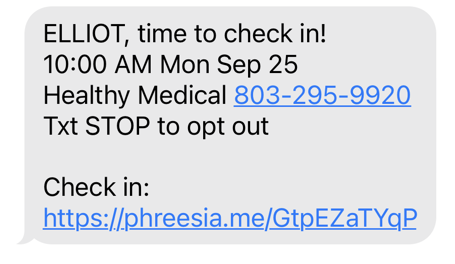
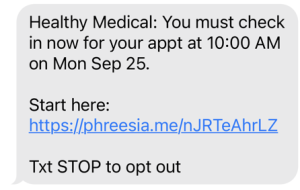
Updated: Patient Communication Templates
We will be updating the verbiage in the following default patient communication templates:
- Referral Request Received
- Referral Request Received (First Follow-up)
- Referral Request Received (Second Follow-up)
- Referral Request Received (Third Follow-up)
- Referral Request Received – Patient Reengagement
- Patient Satisfaction Surveys
- Patient Scheduled
- Appointment Request Received
These templates can be viewed in the Dashboard under Communications, “Communication Customization.” The language update will go live on October 27.
New: Same-Day Pre-Visit Enhancements
We now offer the ability to send both Pre-Visit and Auto In-Office Mobile (AIOM) communications to patients who schedule a same-day visit.
Previously, same-day patients didn’t receive any communications until the scheduled AIOM message, which contributed to lower Self-Service utilization rates for those appointments and increased staff effort. Now, same-day patients will receive Pre-Visit shortly after scheduling, giving them more time to complete registration before their appointment and improving same-day appointment workflows for organizations using AIOM.
This feature will be automatically available upon release.
Eligibility and Benefits
Suppress Copays When Max Out-of-Pocket Met (Early Access)
With this release, Early Access clients can automatically suppress copays once a patient has met their maximum out-of-pocket payment limit. This update will relieve staff of the need to manually review eligibility and benefits and suppress copays, decreasing overcollections and saving time on the refund process.
This update is currently available to Early Access clients and will become generally available in the future.
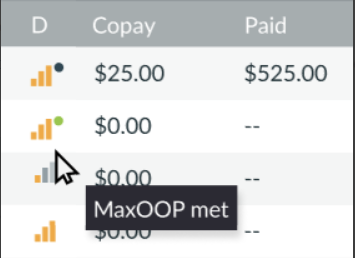
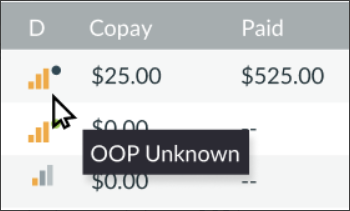
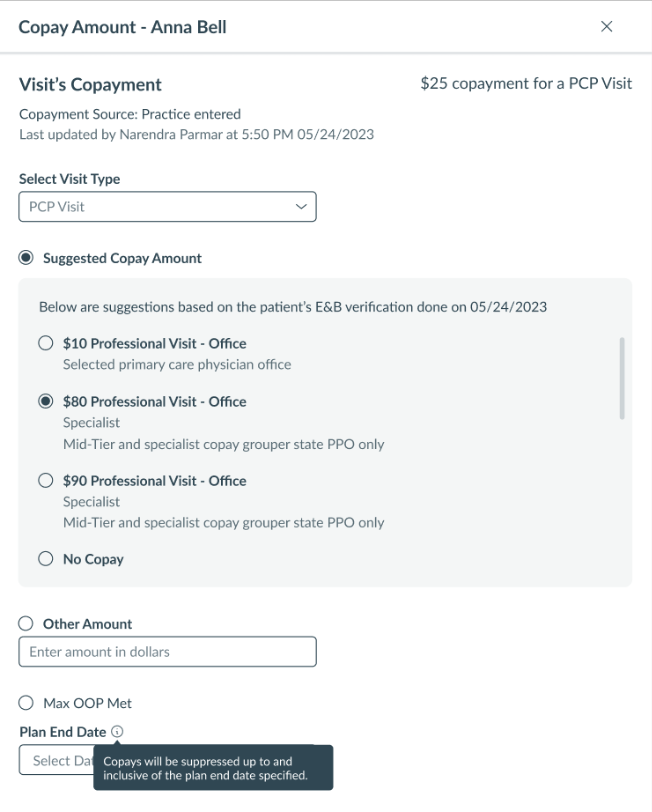
Registration
Improved Generic Image Capture for Screenshots
We’ve improved our ability to process screenshots that patients upload during intake. Improving screenshot quality makes text easier to read, helps streamline workflows that involve document review and reduces manual work for staff who previously needed to contact patients to verify documentation details they couldn’t easily read.
This enhancement will be immediately available upon release.
Content
New and Updated Outreach Health Campaigns
We’ve added new outreach Health Campaigns templates to our library of content.
New content includes:
- PHR: RSV Immunization for Infants: Explains the new RSV antibodies shot for infants, including eligibility information
- PHR: Child Nutrition and Physical Activity Education: Provides tips to keep kids active and help them get proper nutrition
Updated content includes:
- Halloween Safety for Kids (October)
- COVID-19 Vaccine: Fall 2023
The templates will be automatically updated in the Communication Customization section of the Phreesia dashboard.
New PHR: COVID-19 Vaccine Intake Versions B and C
We’ve added two new versions of our COVID-19 vaccine intake modules to help organizations assess patients for eligibility to receive the updated shot and to gauge interest in receiving the vaccine.
These modules will be automatically available.
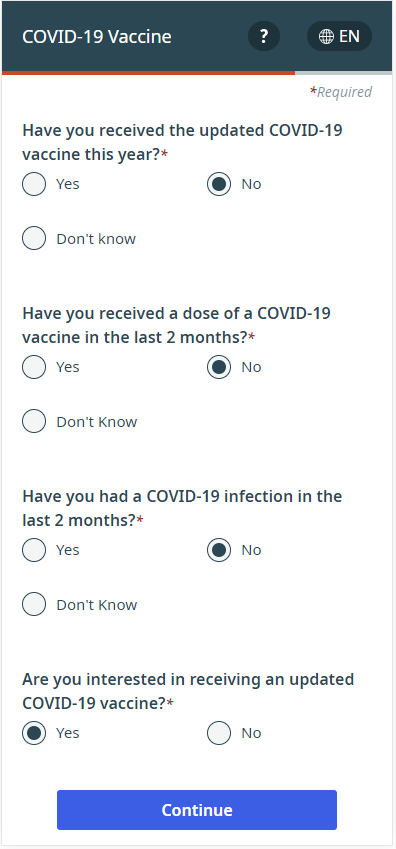
New PHR: Short Mood and Feelings Questionnaire (SMFQ) Module Bundle
We now offer the SMFQ to assess depression in young people 6-17 years old, with versions for both children and adult caregivers. This PRO can help organizations screen patients for signs of depression so you can provide the appropriate referrals, care plans and support.
For additional details or enablement instructions, please reach out to your Phreesia representative.
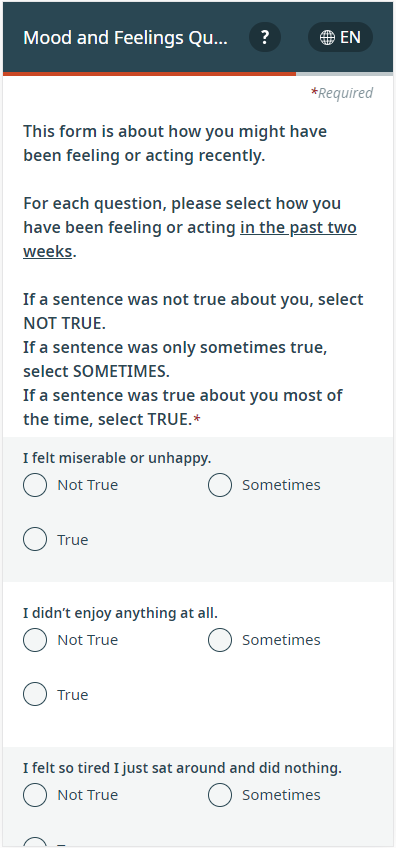
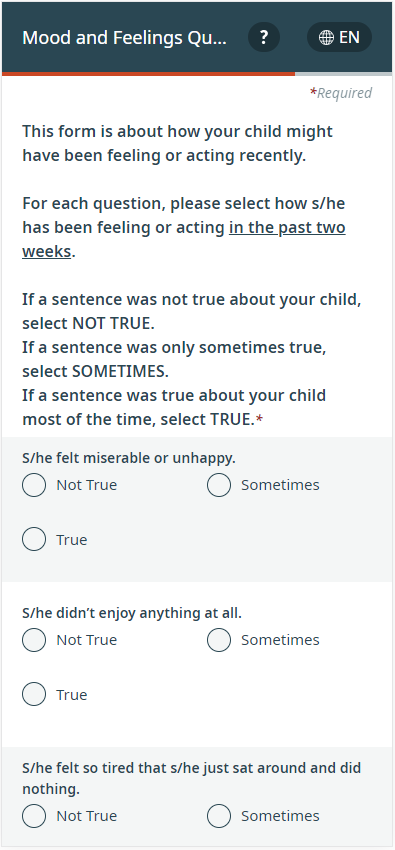
New PHR: Early Childhood Screening Assessment (ECSA) and Brief Early Childhood Screening Assessment (BECSA) Modules
We now offer the BECSA and ECSA with improved functionality to make them easier for both patients and clinicians to use. These PROs help care teams flag patients who may be at risk of developing mental health conditions, so you can identify problems and offer support earlier.
For additional details or enablement instructions, please reach out to your Phreesia representative.
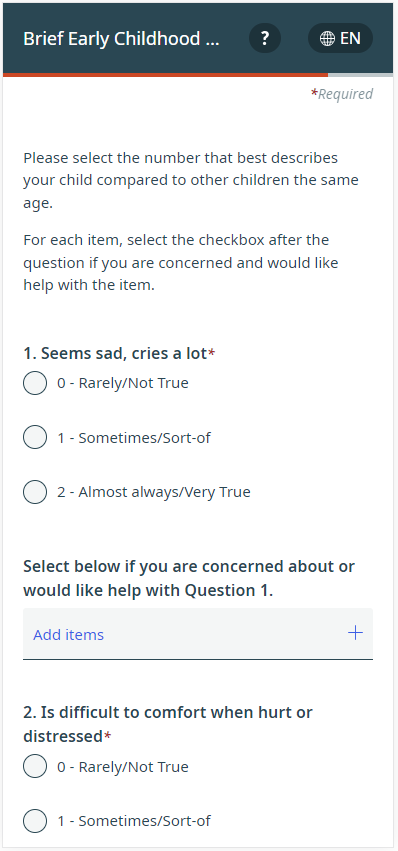
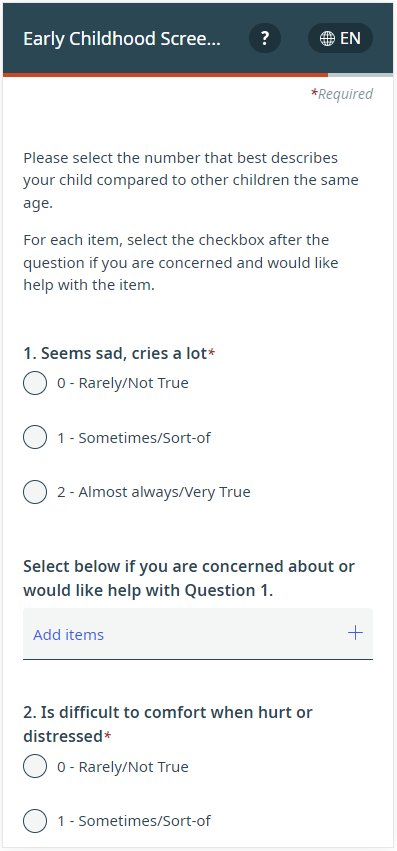
New PHR: Painful Periods Screening Tool (PPST) Module
We now offer the PPST, which assesses the most important endometriosis-related symptoms, to promote earlier diagnosis and treatment of endometriosis.
For additional details or enablement instructions, please reach out to your Phreesia representative.
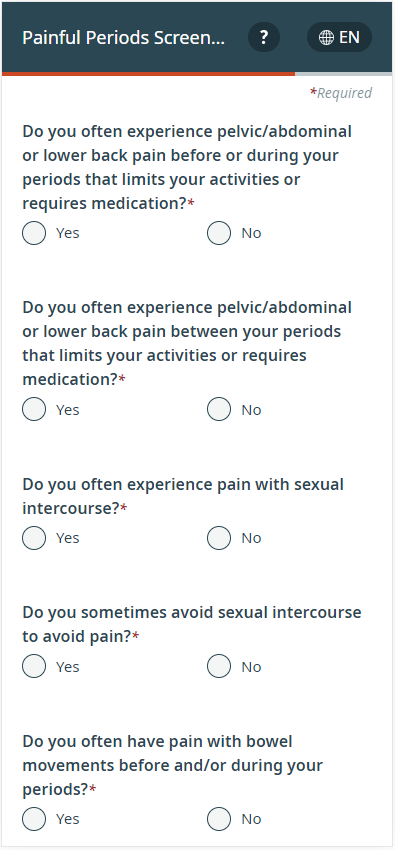
New PHR: Endometriosis Pain and Impact Questionnaire Module
We have also added the Endometriosis Pain and Impact Questionnaire, which measures how endometriosis symptoms have affected a patient in the last 30 days. Questions include those related to activities of daily living, medications and any changes in the condition, so organizations can provide the best care plan for the patient.
For additional details or enablement instructions, please reach out to your Phreesia representative.
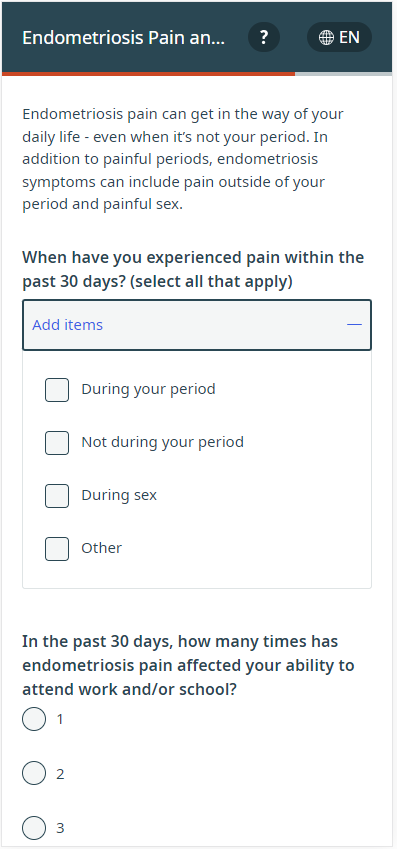
New PHR: Birth History Module
We now offer a Birth History questionnaire that collects basic information about a child’s birth, including delivery facility, birth type, birth weight, hepatitis B vaccination status and newborn hearing screening results.
The questionnaire will help pediatricians and primary care providers collect important birth history information at the newborn’s first well-child visit.
For additional details or enablement instructions, please reach out to your Phreesia representative.
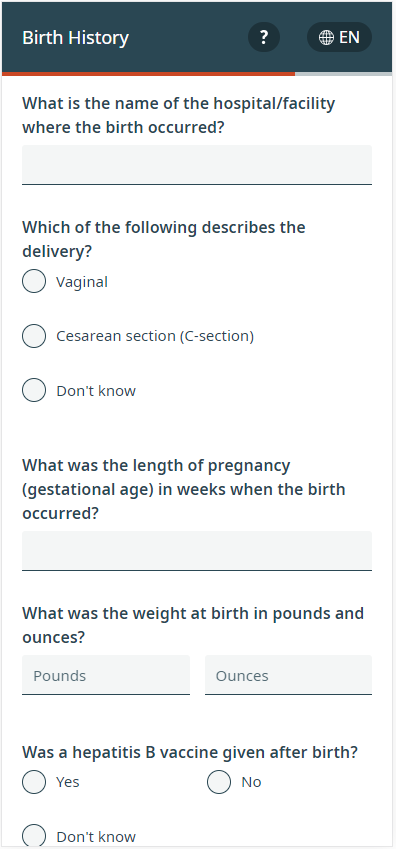
Updated PHR: Infant Feeding Questionnaire
We’ve updated our Infant Feeding Questionnaire designed to collect infant feeding information during every well-child visit in the early infant months. The updated version uses more inclusive language related to the variety of caregivers who may answer the questions.
We also offer a second version that captures similar information, including source of milk, amount and frequency of feeding, etc. You can choose the version that best suits your needs.
The questions help care teams understand the source of feeding, the frequency of feeding and the amount, as well as any vitamins or supplements being given. The questionnaire helps track proper growth and nutrition. This tool is intended for use in patients 4 months and younger.
For additional details or enablement instructions, please reach out to your Phreesia representative.
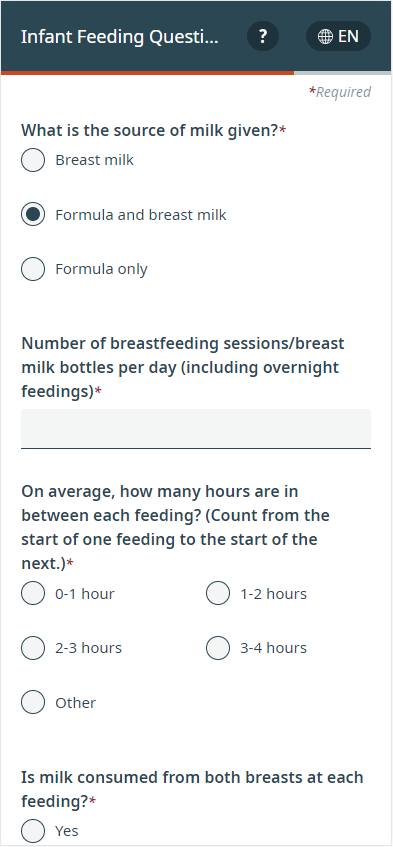
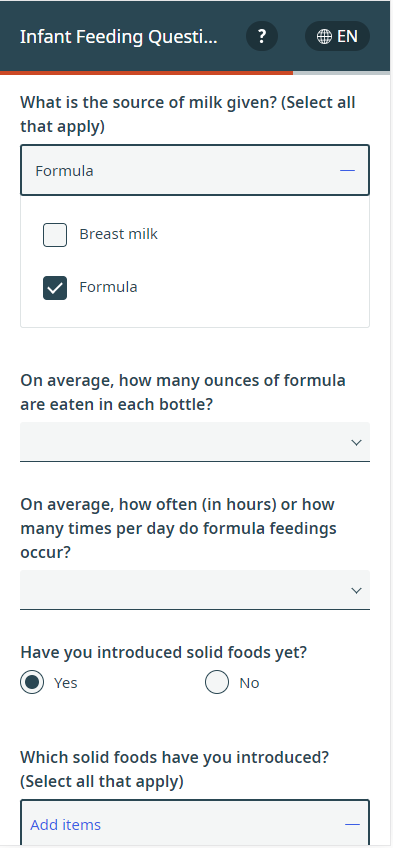
New PHR: Androgen Deficiency in Aging Males (ADAM) Module
We now offer ADAM to measure low testosterone levels and testosterone deficiency in people assigned male at birth. This PRO can help providers screen patients for signs of low testosterone to help determine which patients may require further evaluation or treatment.
For additional details or enablement instructions, please reach out to your Phreesia representative.
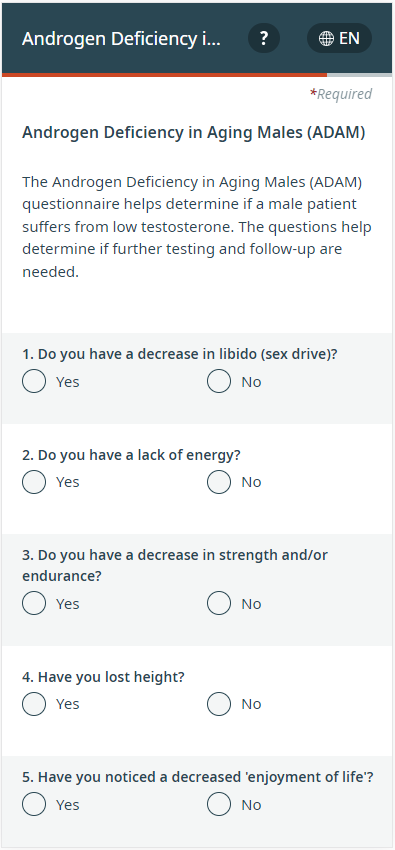
New PHR: Interstitial Cystitis Problem Index (ICPI) and Interstitial Cystitis Symptom Index (ICSI) Modules
We now offer the ICPI to help evaluate patients for interstitial cystitis and determine the level of intervention needed, as well as the ICSI, which evaluates the presence and frequency of bladder and urinary symptoms and their impact on a patient’s daily life.
These PROs help organizations assess patients with long-term bladder and urinary problems and understand symptoms so you can create the most effective treatment plans.
For additional details or enablement instructions, please reach out to your Phreesia representative.
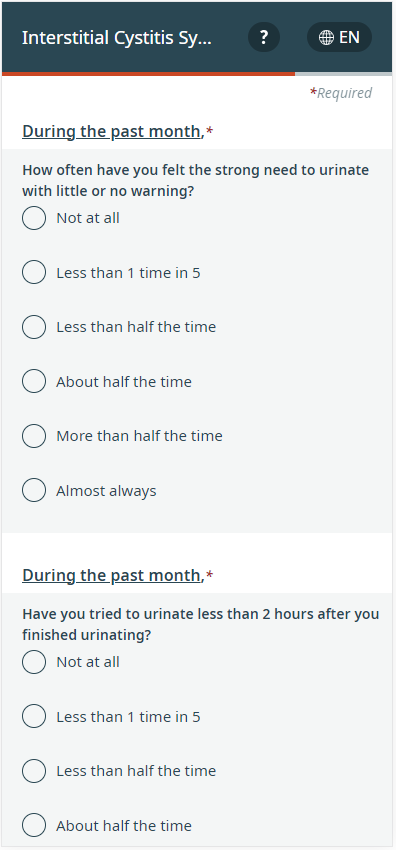
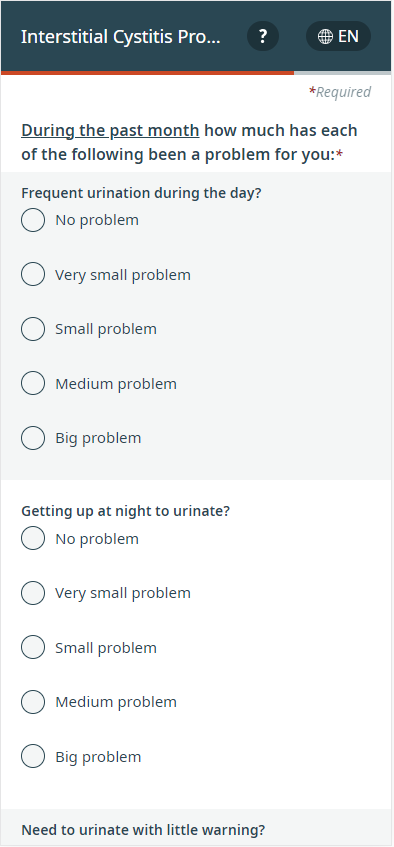
New PHR: Asthma Impairment and Risk Questionnaire (AIRQ) Module
We now offer the AIRQ module to help determine whether a patient’s asthma is properly controlled.
For additional details or enablement instructions, please reach out to your Phreesia representative.
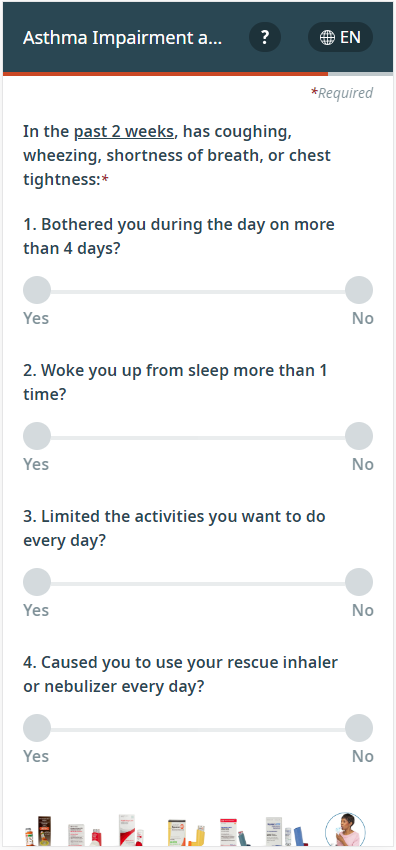
Reminder
PAM-PM for MIPS
The Patient Activation Measure® performance measure (PAM-PM) tracks a patient’s improvement in activation over time, and it’s been proposed as a new 2024 MIPS Quality Measure. If your organization will be reporting MIPS in 2024, PAM-PM may be a good fit for you—and it’s available now at no cost as part of your existing Phreesia offering.
Phreesia will handle the heavy lifting to collect the necessary data throughout the year and provide you with a file when it’s time to report. Your organization will earn 7-10 points when it’s submitted in addition to your top six measures.
If you are eligible for traditional MIPS, contact us for more information.